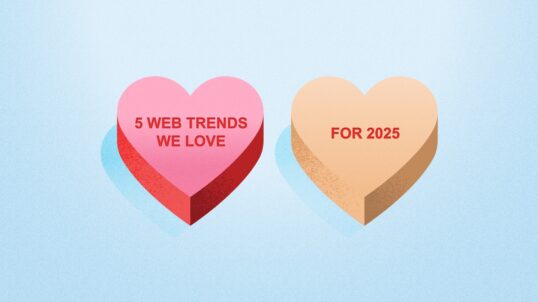Email is still one of the most powerful forms of content marketing. For every $1 spent, email marketing generates $38 in ROI, according to Campaign Monitor. Building an engaged list of email subscribers is no easy feat, so it’s important to treat every interaction as an opportunity to delight and retain your contacts.
One of the best ways to make a good impression over email is to start by designing your emails with the end user in mind. People check their emails on thousands of different devices, and it can be difficult to ensure that the proper formatting appears across all of those different screens. Below are our top tips and best practices to follow when emailing prospective buyers or current customers to ensure your email won’t be ignored — or worse — marked as spam.
Single column design
Keep the design simple to make life easy! A single column design is sufficient for most emails (other than product based or newsletter style) and will make it much easier to accommodate mobile devices. It’s also easier for your readers to scan a single column of material than it is to jump around.
Use 600px for default width
We recommend that you keep your email’s maximum width close to 600px. This width should give you plenty of space and will fit nicely on most web and desktop clients. It can also scale down to fit better on mobile screens.
Keep mobile users in mind
We recommend a “mobile first” design approach. This means that you design the email with mobile primarily in mind, and then make sure it also looks good on desktop. This approach is contrary to how many designers create emails; designing on desktop and then adapting it for mobile. By putting mobile users first, it should increase engagement and click-throughs on mobile devices.
Tip: Do not design separate desktop and mobile emails, as you do not know which email client your target audience is going to use, and they may switch between multiples.
Every email client is different
When designing an email, keep in mind that it’s going to be very difficult (if not impossible) to achieve “pixel perfection.” Instead, try to achieve an email that maintains your branding while being easy to read and engage with on all email clients.
The only way to know how your email will look across the board is to test it.
Use email-safe fonts
A lot of email clients do not support Google Fonts, so having a good fallback font is key. A fallback font ensures your design still looks good without custom web fonts and should always be compatible with Outlook. With Outlook, an unrecognized font will default to Times New Roman.
Here is a short list of the best web safe fonts: Arial, Arial Black, Comic Sans MS, Courier New, Georgia, Impact, Times New Roman, Trebuchet MS, Verdana, Σψμβολ2 (Symbol), and Webdings.
Plan for missing/blocked images
Some clients will block images by default, and some users will change their settings to block images so that they can save on data usage. If images aren’t downloaded, it may be impossible to get your message across. To prevent this, include descriptive alt text for your images.
Avoid entirely image-based emails
With image blocking on, your whole message may be lost, and your carefully crafted email won’t communicate anything! If text must be contained in an image, use styled alt text to make sure your message gets across no matter what.
Tip: Be aware of your recipients’ data plan — not all of us have gone unlimited. Also, image-based emails can be very difficult for the visually impaired. Use HTML text where possible, instead.
Don’t forget to add an unsubscribe link
You don’t want to be emailing people who don’t want to read your emails. In order to comply with CAN-SPAM regulations, you must provide an easy way for users to opt out via an unsubscribe link. The unsubscribe link usually appears in or below the footer, but don’t try to hide it.
Take advantage of these tips and consider A/B testing new ideas to improve your email marketing results. Cutting through inbox clutter is already a challenge, so it’s crucial to make a good impression once you do. With proper planning and design, you can ensure your emails look great and function properly on any device.



